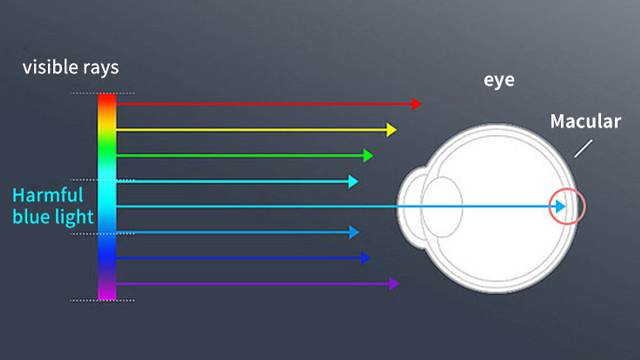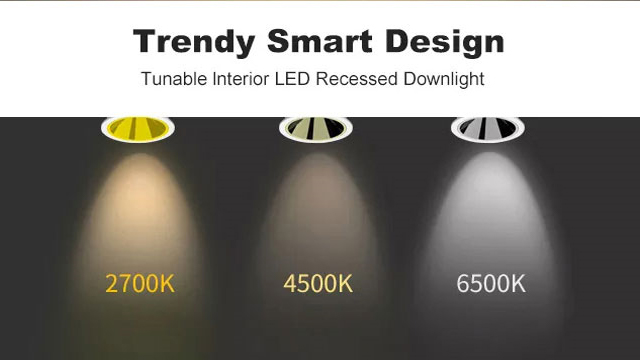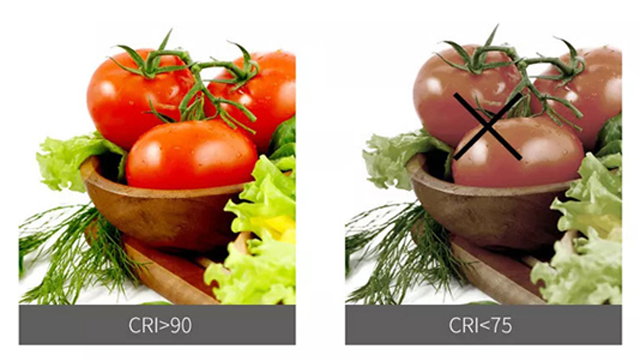Why are the same decoration design, but the effect is very different?
Obviously they are all furniture made of the same material, why do other people’s furniture look more advanced?
With the same lamps and lanterns, other people’s homes are picturesque, but your own home is always a bit unsatisfactory?
The reason lies in the color temperature! Different spaces, different uses, have different requirements for color temperature. If the usage of color temperature is not mastered, the whole space will look chaotic.
So how to avoid this kind of problem caused by color temperature?
1. What is color temperature?
Heating an ideal pure black metal substance at room temperature, as the temperature continues to rise, the object will show different colors. People call the temperature at which different colors appear as color temperature, and use this standard to define the hue of visible light. The unit of color temperature is Kelvin. The color of hot light source is yellowish and the color temperature is low, usually 2000-3000 K. The color of cold light source is white or slightly blue, and the color temperature is usually above 4000K.
2. The influence of color temperature
Different color temperatures have different effects on atmosphere creation and mood. When the color temperature is less than 3300K, the light is dominated by red light, giving people a sense of warmth and relaxation; when the color temperature is 3300-6000K, the content of red, green and blue light accounts for a certain proportion, giving people a sense of nature, comfort and stability; When the color temperature is above 6000K, the proportion of blue light is large, which makes people feel serious, cold and low in this environment. In addition, when the color temperature difference in a space is too large and the contrast is too strong, it is easy to cause people’s pupils to adjust frequently, which will cause fatigue in the sealing of the visual organs and cause mental fatigue.
3. Requirements for color temperature in different environments
Before that, we want to introduce the usual references to the color temperature of indoor lighting, so that we can more easily understand the color temperature requirements of different spaces.
Usually what we call warm white light is the light with color temperature 2700K-3200K; neutral white refers to the light with color temperature 4000K-4600K; positive white light refers to the light with color temperature 6000K-6000K; cool white light refers to the light with color temperature 7000K-8000K .
(1) living room
The reception function is the main function of the living room. The color temperature should be controlled at around 4000~5000K (neutral white). If the color temperature is too high, the space will appear empty and cold, while the color temperature is too low, which will increase the irritability of the guests; 4000~5000K can make the living room look bright and create a quiet and elegant environment; according to the scene of the space, let the light hit the wall: the design of the light strip creates another atmosphere.
(2) Bedroom
The lighting in the bedroom requires warmth and privacy to achieve emotional relaxation before falling asleep, so warm light sources are better.
The color temperature should be controlled at about 2700~3000K, which not only meets the lighting conditions, but also creates a warm and romantic atmosphere.
Putting table lamps, chandeliers, wall lamps, etc. on the bedside is also a common way to adjust the color temperature
(3) Restaurant
The dining room is an important eating area at home, and a comfortable experience is very important. It is best to choose warm colors in the lighting selection of the restaurant, because psychologically speaking, eating under warm lights is more appetizing.
In terms of color temperature, it is best to choose 3000~4000k (neutral light).
It will not make the food too distorted, but also create a warm dining atmosphere.
(4) study room
The study room is a place for reading, writing or working. It needs a quiet and calm feeling so that people will not be restless in it.
Do not use lights that are too warm, as this will easily lead to sleepiness and fatigue, which is not conducive to concentration;
However, the study room is also a place where you need to use your eyes for a long time. If the color temperature is too high, it will easily cause visual fatigue.
It is recommended that the color temperature be controlled at around 4000~5500K (neutral white), which is neither too warm nor too cold.
Appropriate color temperature can make people calm down to work and study.
(5) Kitchen
Kitchen lighting should take into account recognition. It is better to use fluorescent lamps that can maintain the original colors of vegetables, fruits, and meat.
The color temperature is controlled between 5500~6500K (positive white light), which can not only make the dishes play an appetizing color.
Also helps cooks have higher discernment when washing.
(6) Bathroom
The bathroom is a place where we have a particularly high usage rate. At the same time, because of its special functionality, the light should not be too dark or too distorted, so that we can observe our physical condition.
The recommended light color temperature is 4000-4500K.
In fact, indoor lighting effects are not only affected by color temperature, but also by factors such as color rendering and illuminance. In order to achieve the desired effect, you should comprehensively consider space requirements, design style, and use methods to use color temperature correctly. And usually we have more than one function in a space, so when we choose lamps, we can also choose stepless dimming lamps to change the color temperature and brightness freely.
If you are interested in different styles of lighting, please contact us~
SandyLiu:sandy-liu@wonledlight.com
TracyZhang:tracy-zhang@wonledlight.com
LucyLiu: lucy-liu@wonledlight.com




